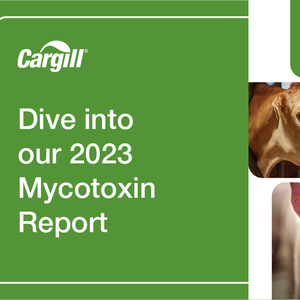Each year since 2004, dsm-firmenich Animal Nutrition & Health has analyzed a large number of feed samples from around the world to understand and monitor contamination levels of the different mycotoxins in a variety of feed ingredients. This information is shared in the annual dsm-firmenich World Mycotoxin Survey. The survey accurately identifies mycotoxin risks based on animal species and location.
Until December 2023, 23,808 samples were collected and analyzed from 95 countries around the world. The results concluded that Fusarium mycotoxins fumonisins, deoxynivalenol and zearalenone are most frequently found, with the highest regions of mycotoxins found in North and Central America, South Asia, China and Taiwan.
Key highlights revealed the negative effects of mycotoxins on each species. “With aquaculture becoming one of the fastest-growing protein sectors, the quest for sustainable alternatives to fishmeal intensifies. This shift to novel ingredients, particularly plant proteins, raises concerns about mycotoxin contamination,” said Benedict Standen, global head of Aqua marketing for dsm-firmenich. “Mycotoxins negatively impact the immune system, weakening the animal and increasing your health costs. In a year marked by record-high sea surface temperatures, aquatic animals cannot regulate their own body temperature, this is highly likely to cause additional stress to our animals necessitating proactive mycotoxin risk management.”
The survey also includes details on:
- Trends in mycotoxin occurrence over the years
- Prevalence levels for each mycotoxin in each region & global and local risk levels for each mycotoxin
- Comparison of prevalence levels from January-December 2022
- Insights on mycotoxin levels in grains and soy from major producing countries
- More information about Spectrum 380®, the most powerful mycotoxin detection method used as a research tool and performed at the University of Natural Resources and Life Sciences Vienna (BOKU)
- Overview of the occurrence of the most frequent mycotoxins, their masked and modified forms as well as emerging mycotoxins; based on results delivered by the most comprehensive commercially available multi-mycotoxin method, Spectrum Top®50
- Mycotoxin levels determined in finished feed/TMR
“Mycotoxins are a continuous threat to animal health, with adverse effects impacting reproduction, digestive disorders and performance. The latest results reveal that mycotoxins continue to pose a global threat to animal welfare and farm productivity, highlighting the importance of implementing the right mycotoxin management strategy,” stated Ursula Hofstetter, head of mycotoxin risk management at dsm-firmenich.










